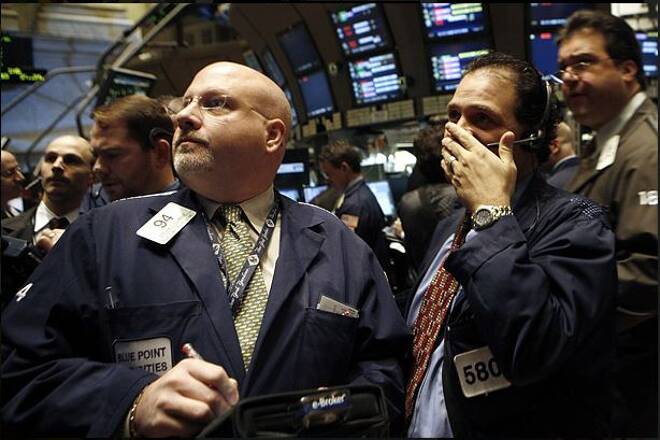Advertisement
Advertisement
More Downside than Upside Potential for Stocks at This Time
By:
Strategists at Bank of America Merrill Lynch said last week that they found something a little strange about the stock market. Their research showed that
Strategists at Bank of America Merrill Lynch said last week that they found something a little strange about the stock market. Their research showed that bank lenders are getting worried about the economy, but investors appear to have a “what, me worry” attitude towards current valuations.
According to their research, demand for commercial and industrial loans, a leading indicator of growth, dipped into negative territory in the first quarter. The source of their data was the latest Federal Reserve Senior Loan Officer survey. Further analysis showed that during periods of low loan demand have in the past been mostly associated with rising volatility, but this is not happening now. In fact, volatility has been drifting lower.
Early last week, the CBOE Volatility Index or VIX fell to its lowest level since December 1993. The VIX, widely considered the best gauge of fear in the market, reached a low of 9.77, and later in the week hit levels not seen since 1994.
Early last week also marked the 10th time the VIX close below 10, and each of the previous nine times it closed below that level were followed by negative 12-month price returns on the S&P 500 Index.
Am I predicting a crash in the stock market? No, but I am saying that volatility is likely to finish the year higher than where it is right now, which may be associated with a bearish performance in the stock market.
Although the NASDAQ Composite and NASDAQ-100 Indexes have been pushing new all-time highs, the rally has primarily been supported by only 4 stocks. The so-called “FANG” trade is being driven by Facebook, Amazon, Netflix and Google. We’re only going to know how much of an influence these stocks have on the entire market after investors decide to start booking profits.
The blue chip Dow Jones Industrial Average and the bench mark S&P 500 Index are performing well below the NASDAQ this year. Recently, the S&P 500 Index reached a new all-time high, but the Dow hasn’t visited that territory since March 1. In fact, both are currently trading below their March highs that were reached the day after President Trump gave his first speech before Congress.
So despite the recent strong earnings season, all the Dow and S&P did was recapture the loss that was fueled by worries over Syria, North Korea and the French Presidential election. In my book, this tells me the market is already being to weaken.
At this time, I feel there is more downside potential then upside potential for the market. So your choices are either to ride out the correction, pare positions, or play the short-side. Based on where the VIX is currently trading and how it has been trading, I think investors may be in for a near-term surprise.
I believe investors are facing more global policy uncertainties than there is news to be optimistic about. Like the uncertainties faced earlier in the year, i.e. Syria, North Korea, the French Presidential elections, investors may decide to respond like they normally do and move some money into safe haven assets.
Looking ahead, I think investors have to start preparing for delays and disruptions to the Trump agenda, particularly tax reform, rising geopolitical tensions over how to deal with North Korea, uncertainty around future trade policy and anxiety toward future Fed rate hikes. Some even say that the execution of Brexit should be a concern, but I left it out because it is expected to take two or more years to play out.
Add to the list the possibility of further cyber-attacks on financial institutions or exchanges and we have a recipe for disaster.
If there is an unexpected event then expect the VIX to spike higher. If there is a prolonged sell-off in equities then expect the VIX to gradually rise as investors take more protection.
About the Author
James Hyerczykauthor
James is a Florida-based technical analyst, market researcher, educator and trader with 35+ years of experience. He is an expert in the area of patterns, price and time analysis as it applies to futures, Forex, and stocks.
Latest news and analysis
Advertisement
